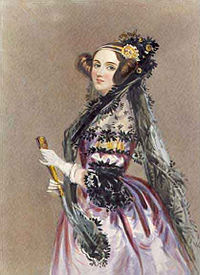Timeline of women in computing

Women have always been involved in computing, but the timeline of their progress and recognition within this field began in the mid 1800s. In 1843, Ada Lovelace wrote the first computer program, which made her the world's first computer programmer. In 1937, Dorothy Vaughan joined the National Advisory Committee on Aeronautics (NACA), becoming one of the first African-American computers. After World War II, as computers became increasingly prevalent, more women started to enter the computing field. In 1953, Grace Hopper made history by creating the world's first computer language called COBOL, and in the 1960s, Rear Admiral Grace Hopper was the first female promoted to rear admiral in the US Navy and also set up some of the earliest computer networks. In 1963, Frances Spence became the first woman to be professionally certified as a data processor. During the 1970s and 80s, women’s roles in the computing field began to slowly expand. In the 1990s and 2000s, the use of computers further increased, resulting in more opportunities for women. The number of women in computing roles continues to grow, with their contributions to the field of computer science now widely recognized.
Related topics others have asked about:
